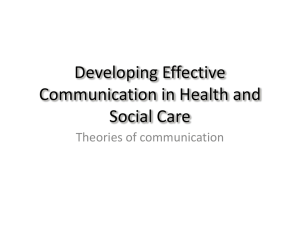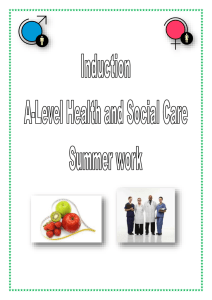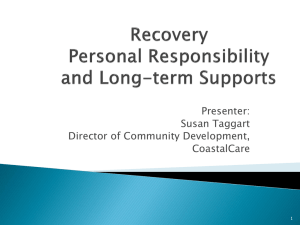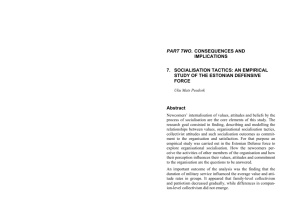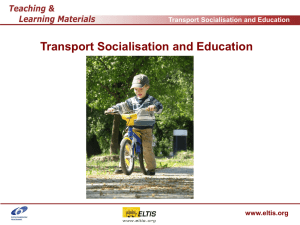PPT Social Class and human development
advertisement
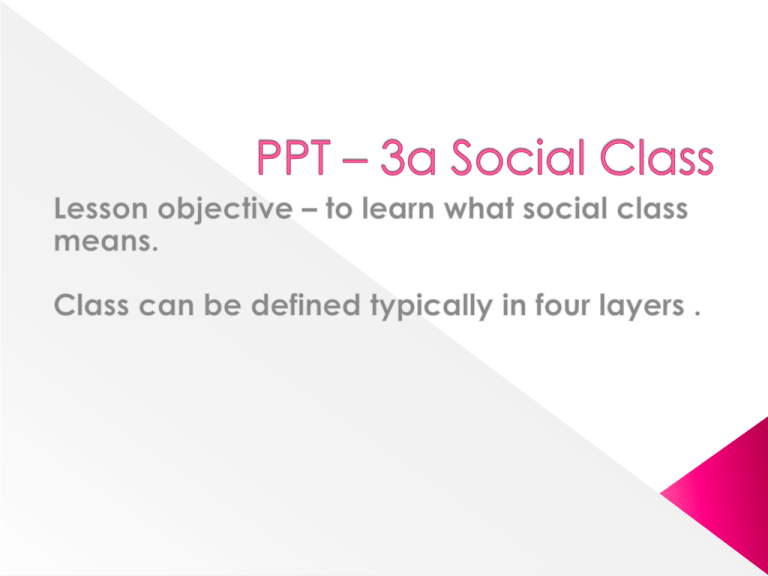
Social class refers to a group of people with similar levels of wealth, influence, and status. In countries with the smallest income differences between the classes, they have the best health status. In the UK, where the income difference between classes is large, there is likewise inequality in health status. Accidental deaths in the lowest social classes of children is five times greater than in the higher classes. Infant mortality, lung cancer, stroke and heart disease rates are all several times greater in the lowest social classes. Argyle (1987:189) states, ‘the lower social classes are affected by most illness, more often, take more days off from work, and die a little sooner because of them (the illness)’. This is due to inequalities in the conditions of life – smaller homes, less heating, larger families, less good food and so on. Argyle argues that middle classes make more use of preventative health services such as antenatal clinics, vaccinations programmes and cervical screening, than do working class people. There is also evidence that social class 1 and 2 smoke less, weight less and exercise more than classes 6-7. Tasks – to consider the following characters and A) decide which class each key person belongs to B) whether they are ‘fixed’ within their class or whether there is any potential for movement. Where there is potential, state clearly factors that enable that potential. Lesson objective – to learn what social class means. The lower class The lower class is typified by poverty, homelessness, and unemployment. People of this class, few of whom have finished high school, suffer from lack of medical care, adequate housing and food, decent clothing, safety, and vocational training. The media often stigmatize the lower class as “the underclass,” inaccurately characterising poor people as welfare mothers who abuse the system by having more and more babies, welfare fathers who are able to work but do not, drug abusers, criminals, and societal “trash.” Lesson objective – to learn what social class is. Lesson objective – to learn what social class is. The working class are those minimally educated people who engage in “manual labor” with little or no prestige. Unskilled workers in the class— dishwashers, cashiers, maids, and waitresses— usually are underpaid and have no opportunity for career advancement. They are often called the working poor. Skilled workers in this class— carpenters, plumbers, and electricians—are often called blue collar workers. They may make more money than workers in the middle class—secretaries, teachers, and computer technicians; however, their jobs are usually more physically taxing, and in some cases quite dangerous. Lesson objective – to learn what social class is. The middle class are the “sandwich” class. These white collar workers have more money than those below them on the “social ladder,” but less than those above them. They divide into two levels according to wealth, education, and prestige. The lower middle class is often made up of less educated people with lower incomes, such as managers, small business owners, teachers, and secretaries. The upper middle class is often made up of highly educated business and professional people with high incomes, such as doctors, lawyers, stockbrokers, and CEOs. Lesson objective – to learn what social class is. Lesson objective – to learn what social class is. Comprising only 1 to 3 percent of the United States population, the upper class holds more than 25 percent of the nation's wealth. This class divides into two groups: lower-upper and upper-upper. The lower-upper class includes those with “new money,” or money made from investments, business ventures, and so forth. The upper-upper class includes those aristocratic and “highsociety” families with “old money” who have been rich for generations. These extremely wealthy people live off the income from their inherited riches. The upper-upper class is more prestigious than the lower-upper class. Wherever their money comes from, both segments of the upper class are exceptionally rich. Both groups have more money than they could possibly spend, which leaves them with much leisure time for cultivating a variety of interests. They live in exclusive neighborhoods, gather at expensive social clubs, and send their children to the finest schools. As might be expected, they also exercise a great deal of influence and power both nationally and globally. Henry is a 21yr. Old student, studying at Oxford. His education took place at a private school. He was a boarder during term time but spent his holiday's at his parent’s family estate. His Father is titled and referred to as “lord’ – an inherited title which at some point will become Henry’s as the oldest son in the family. When his Father retires, Henry will be expected to take over the running of the estate Anna is 36, a wife and Mother. She left school without any qualifications and for the last ten years has worked part-time for a local supermarket. Her husband Keith is a local builder. They live in their own home – a semidetached house in a small Market Town. Anna has recently completed an Access and Guidance course and has applied to University as a mature student in the hope of one day becoming a Primary school teacher. Your Analysis Your Analysis Lesson objective – to learn what social class is. Jane is 24 and a single parent. She lives in council accommodation in the city centre. When she lived at home with her parents, she worked for a short time as a care assistant but when she fell pregnant with her son, working was not an option. Since then, she has lost a lot of confidence and rarely goes out. She finds if difficult now to make friends and prefers to just visit her family at weekends. Money is very tight and her parents are unable to help out as they are also unemployed. Your Analysis Your Analysis Steve is 42 and works as a bank manager. He is married with three children, all of whom attend the local secondary school. Steve is a home owner – a detached four bedroom house on the edge of a large town. His wife Julia, works part-time as an accountant and most of their spare income is spent on overseas holidays. Lesson objective – to learn what social class is. Phoebe is 17 and studies at her local secondary school. She is very unsure about what she wishes to do with her future. Her Mum is a housewife and her Dad is selfemployed as a plumber. Mum encourages Phoebe to apply for university but Phoebe is currently considering a vocational course in hairdressing and beauty therapy. Your Analysis Your Analysis Deepika is 28 and has just completed law school. She won a scholarship to study in the UK and left her family behind in a poor area of the Punjab in India. Deepika has been offered a post in a large legal company and if he is successful, may be offered a partnership in a few years time. He intends to remain in the UK and has applied for citizenship. Lesson objective – to learn what social class is. Data shows that those in higher classes consistently enjoy a higher income than those in the lower classes. The middle class traditionally have, - greater freedom in their occupation Can you think of examples? - More respect Can you also think of some - Greater diversity exceptions? - Have some control and authority over their work Social mobility Correlation between job title and The lower class traditionally addictions Gain less satisfaction from work Routine is often dull There is a higher risk of health hazards Class affects our lifestyle greatly. It can influence; How children are brought up Their expectations and themselves and others Education – school availability, subject choice and ability to succeed Diet \housing Access to health care Access to leisure and sporting facilities Awareness of culture Self esteem self concept Health and well-being etc. Lesson objective – to learn what social class is. Government complete studies to find out what the odds ratio (correlations) are for illness and additive patterns of behaviorcorrelated against occupation, class and illness and job title . This is known as a SEC (socio-economic class) base model study. Lesson objective – to learn what social class is. Imagine that you are an 11yr old child growing up in a nuclear family where the main occupation in the household is a truck driver. Thought shower the positive and negative factors that your family’s lifestyle may have on your day-to-day life – consider: Health Social Emotional Intellectual Economic factors Now imagine that you are a parent in that household – what could you do to change some of the negative aspects of your child’s day-today life? What factors might you have no control over? It is often suggested that rural areas in the UK do not suffer from deprivation and low employment these facts are very much disputed by recent reports and studies into rural areas in the UK. A child learns a great deal from copying the activities of members of its family., but characters on TV, in books, in computer games on DVDs and on radio also influences him or her. Primary socialisation then, occurs from experiences learned at an early age in the home and through the media. Children learn the ‘norms’ or beliefs of the family. When father goes to work every weekday to earn money to satisfy the needs of the family, this becomes the norm, and a family whose male parent does not work is outside that norm. similarly, when appointments for clinics, surgeries or hospitals are largely ignored or complained about, the child rapidly picks up that such arrangements are not important and the indifference becomes perpetuated in their families in the future. Secondary socialisation – comes from a wider field of influence when the child becomes older. Between the ages of 1115 adolescents become very involved with their own group of friends and the influence of the family wanes (but does not disappear) while that of the friendship group increases. This is particularly noticeable in music styles, sports enthusiasms, eating and drinking habits, substance abuse and fashion. Lesson objective – to learn what social class is. Social experiences should be appropriate to the child’s age, and provide the opportunity to mix and communicate with other people. Examples are parties, holidays, visiting relatives and friends, visiting church and Sunday school, the part, zoo, museum,, farm. Ball pool, going to nursery/playgroup and dance, drama, music and swimming lessons. Social skills lets children fit in with the people who live with and around them. Socialisation is the acquisition of skills such as: › › › › › › › Being able to respect the ideas and feelings of others Making friends Sharing and taking turns Cooperating and negotiating Understanding rules Eating correctly Having standards of hygiene Stages of social development First week – responds to main carer with smiles and gurgles 3 months – has ‘conversations’ by making noise; enjoys others’ company 6 months – attracts adult attention to start interaction; shy with strangers; reacts differently to cross and pleasant voices; uses fingers to feed themselves 12 months understands basic commands, e.g. waves bye bye; helps with daily routine, e’g’ lifts legs for nappy change; drinks from cup and uses spoon 2 years – self feeds; starts toilet training; parallet play 3 years – uses toilet mostly independently; willing to share and take turns; likes to be with other children, chooses own friends 4-5 years – shares well and understands rules; less demanding of adult attention. Lesson objective – to learn what social class is. Want to build community spirit and get all the gossip on your neighbours? Then throw a street party, as the 1950s craze is back The laughter and chatter almost drowned the rattle of the tambourines as the colourful conga bobbed its way down the street of Victorian terraced houses and post-war semis. Stretching almost the entire length of the road, it swayed as it was joined by neighbour after neighbour - a vet, a dance teacher, a gaggle of excited children, smiling grandparents, a businessman, a couple of musicians and a sound engineer - all shuffling together in the glorious summer sunshine. This may sound like a scene from decades gone by, but in fact it took place one Sunday afternoon in an otherwise unremarkable suburban street in Kingston, Surrey, just weeks ago. Lesson objective – to learn what social class is. 1. What social factors affect human growth and development and how can they influence an individual's health, well-being and life opportunities? 2. Now review your answers! On the ladder list from top to bottom what do you think you understand the most – the bottom means you know nothing about a topic. The top of the ladder means you think you are comfortable with how much you know about a topic. Place the following key terms next to the ladder where you think they should go: parenting styles, parental attachment, culture, education, developmental delay, gender, income and resources, pollution (and their effects on development).




